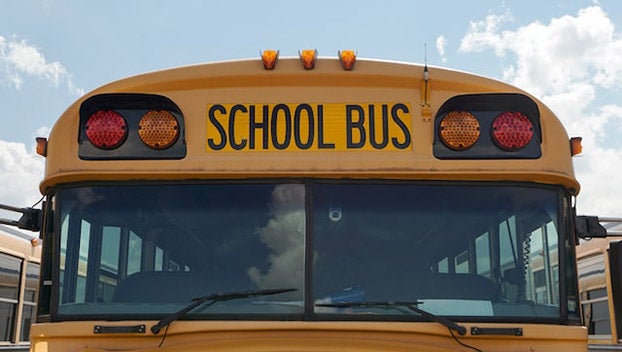PE Discipline Report Presented
Published 4:25 pm Thursday, August 4, 2011
PRINCE EDWARD – School board members were presented a detailed discipline report at their July meeting.
“I'm not trying to interpret and establish cause and effect on these reports,” commented the school's director of Accountability and Research Dr. Echeverria. “I'm just presenting the numbers to the board.”
Overall, the number of disciplinary incidents were down slightly at the elementary school (774 compared to 803 the previous year), but up at the middle school (from 859 to 1,112) and the high school (from 1,244 to 1,850).
At the elementary school, the largest portion of infractions was in the disorderly/disruptive behavior (711) category. In other numbers, there were also eight weapons related offenses that included one bomb threat, one possession of ammunition, one incident where a toy gun was brought to school, two situations of bringing sharp blade/weapons to school, and three of bringing a knife to school.
At the middle school, disorderly/disruptive behavior also led the way at 964 (up from 709 the previous year). There were no weapons related offenses for the year and no instances of possession/use of drugs (down from three the previous year), but one for alcohol, four for tobacco paraphernalia, and three for tobacco.
At the high school, there were 944 instances of disorderly/disruptive behavior (up from 440) and 703 listed among other offenses (which includes attendance issues), up from 592. There were two incidences of a bomb threat, four for bringing a knife to school and one for bringing other weapons to school. There were two instances of possession/use of drugs, four for alcohol, one for tobacco paraphernalia, and 25 for tobacco.
Dr. Echeverria, in discussing a specific high school category, offered that there may be some differences in reporting. There is a new administration and their practice may be different from the previous administration.
At the end of the presentation, school board member Dr. Ellery Sedgwick assessed that some were significant numbers -citing some very large increases, particularly in classroom disruptions in the middle school and high school.
He asked if the board can have a report from the schools when they've had time to address it on what they see as the causes and what kind of remedies would they want to put in place.
Dr. Echeverria also offered that there is a lot of subjectivity-what's a fight, what's an altercation. When they have different administration in two years, he also cited, it's the “intangible that I don't know if it's affecting these numbers.”
“One thing I should mention is that we have to be careful interpreting these numbers, however…we also have the school climate survey that we completed…the Tripod survey that Cambridge also administered,” Dr. Echeverria said. “If we have three indicators and they're consistent, then we can…believe, trust the validity of that school climate situation in the schools more than just one…”
The climate survey is taken by teachers, the Tripod survey is of parents, and the report is the numbers, the data noting that they have a more complete picture putting all three reports together.
Division Superintendent Dr. David Smith cited that as they look at the discipline numbers-and he used the high school as the example – to keep in mind that for a full year the new administrative staff had a heightened focus on major change in everything that was done in the operation of the school.
“And I think that's a fair way to…describe their approach this year,” Dr. Smith said. “I think it's everything that's been looked at and I think it's reasonable to expect discipline numbers in many cases to show some significant increases because of increased enforcement, because changes in rules and assumptions that kids weren't used to from the prior year, and I think part of it may be a reflection of a different way of approaching and holding students accountable for actions that may not have been held at that high level in the past.”
Dr. Smith also cited that it is his impression that many of the infractions from the high school are coming to the student affairs committee sooner without as many repetitive referrals “which means, hopefully, that's a lessened impact on disruptions in the classroom before the serious interventions are imposed.”
Dr. Sedgwick noted that some of the increases are large.
Schools are expected to analyze the numbers, although Dr. Smith offered that answers for some of the increases and decreases are really hard to ferret out with any degree of accuracy. He cited they can speculate and use their best judgment.
Rather than wait to the end of the year report, information, Dr. Echeverria highlighted, is shared with the schools regularly.





